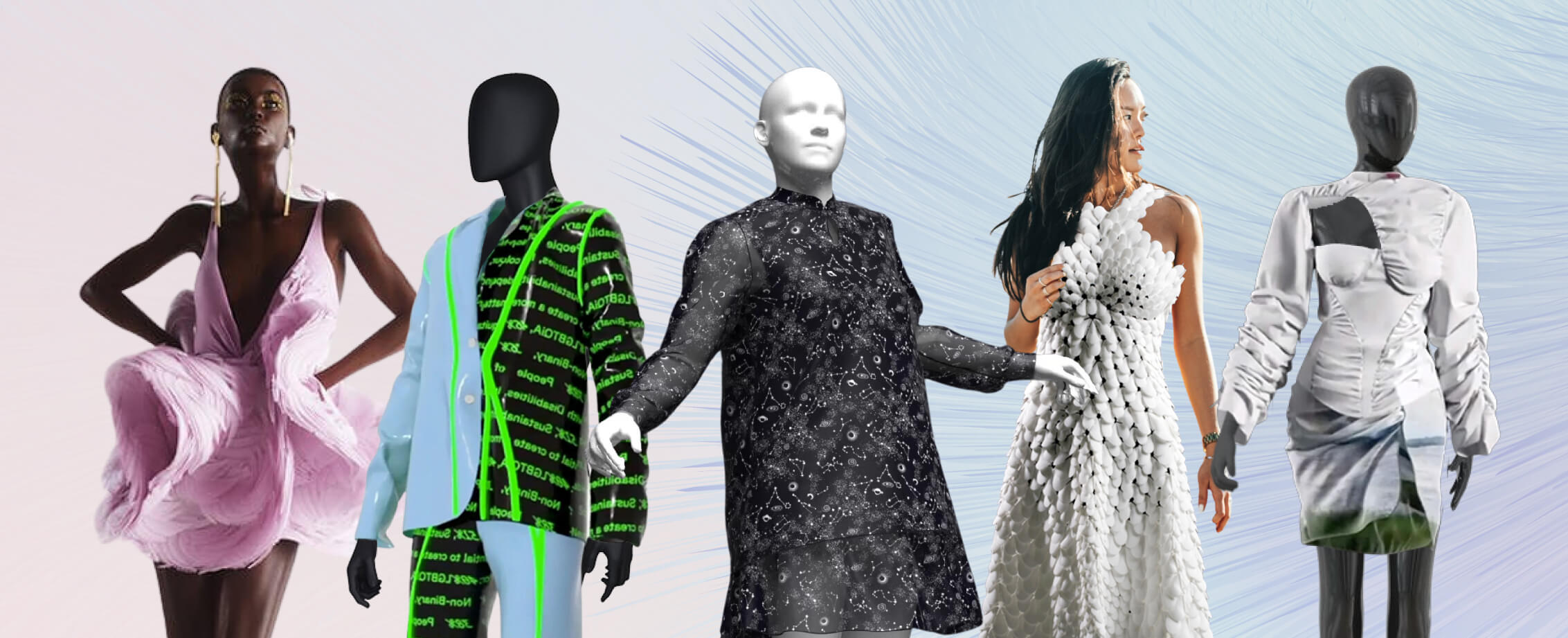10 Difference Fashion and NFTs: Unveiling the Intersection of Fashion and Blockchain – In a groundbreaking convergence of technology and style, the intersection of fashion and non-fungible tokens (NFTs) has emerged as a transformative force within the industry. NFTs, built on blockchain technology, have paved the way for unique digital ownership and authenticity in the world of fashion. In this article, we delve into the dynamic relationship between fashion and NFTs, exploring the implications, challenges, and innovations at this captivating intersection.

1. NFTs Defined: Transforming Ownership in the Digital Realm
Non-fungible tokens, or NFTs, are unique digital assets authenticated using blockchain technology. Each NFT represents ownership of a specific digital item, making it distinct from other tokens. This technology has found its way into the fashion landscape, transforming how we perceive and interact with digital and virtual fashion.
2. Virtual Fashion in the NFT Space: Digital Couture Unveiled
NFTs have opened doors to a new dimension of fashion in the digital realm. Virtual fashion designers now create unique, non-fungible digital garments that users can purchase as NFTs. These digital couture pieces exist solely in the virtual space, allowing users to showcase them in augmented reality (AR) environments or online platforms.
3. Authenticity and Ownership: The Blockchain Advantage
One of the revolutionary aspects of NFTs in fashion is the ability to establish authentic ownership. Blockchain ensures the transparency and traceability of ownership, providing a solution to the longstanding issue of digital fashion piracy. Each NFT serves as a certificate of authenticity, verifying the originality of digital garments.
4. Tokenizing Fashion Collections: NFTs as Wearable Art
Fashion designers are now exploring the concept of tokenizing entire collections as NFTs. These digital fashion collections become a form of wearable art in the virtual world, allowing users to express their unique style through the ownership and display of these limited-edition digital garments.
5. Virtual Fashion Shows: Navigating the Metaverse Runway
The metaverse has become a runway for virtual fashion shows where NFTs take center stage. Designers showcase their digital creations in immersive and interactive environments, blurring the lines between the physical and virtual fashion worlds. Users can attend these shows, experience the digital garments, and even purchase them as NFTs. (Read More : Digital Fashion Influencers and Virtual Fashionistas on 2024: Redefining Style in the Digital Realm)
6. Ownership and Resale: Redefining Digital Wardrobes
NFTs introduce a novel concept of ownership and resale in the digital fashion space. Just like physical fashion items, users can buy, sell, and trade NFTs representing digital garments. This dynamic resale market adds a layer of value and collectibility to virtual fashion, mimicking the traditional fashion market.
7. Collaboration and Limited Editions: NFTs as Exclusive Drops
Fashion brands and designers are leveraging NFTs for exclusive collaborations and limited edition drops. These digital releases often come with perks such as access to physical counterparts, creating a bridge between the digital and physical fashion realms. NFTs, in this context, become coveted and unique digital fashion statements.
8. Challenges and Criticisms: Addressing Environmental Concerns
Despite the excitement surrounding NFTs, challenges and criticisms persist. One major concern is the environmental impact of blockchain technology, particularly in energy consumption. As the fashion industry embraces sustainability, addressing these concerns becomes crucial for the continued integration of NFTs.
9. Empowering Digital Artists: New Avenues for Creativity

NFTs have empowered digital artists and creators in the fashion space. Designers who specialize in virtual and digital creations now have a platform to monetize their work directly through NFT sales. This democratization of the creative process expands opportunities for artists in the evolving fashion landscape.
10. Future Trends: The Evolving Relationship Between Fashion and NFTs
The intersection of fashion and NFTs is still in its early stages, and the future promises even more innovations. As technology advances and the metaverse evolves, we can expect to see further integration of NFTs into the fashion industry, with new possibilities for creativity, ownership, and digital expression.
Conclusion article 10 Difference Fashion and NFTs:
In conclusion, the fusion of fashion and NFTs* represents a digital renaissance, reshaping how we perceive and engage with fashion in the virtual era. NFTs offer a bridge between the physical and digital worlds, providing a solution to issues of authenticity and ownership in the digital fashion space. As the industry navigates this transformative intersection, it opens avenues for creativity, collaboration, and a redefined concept of ownership, setting the stage for a dynamic future where the boundaries between real and virtual fashion continue to blur.
Read More : Inclusive Fashion: Fostering Diversity in Design and Representation on 2024





2 thoughts on “10 Difference Fashion and NFTs: Unveiling the Intersection of Fashion and Blockchain”
Comments are closed.